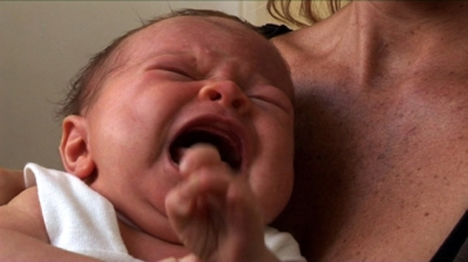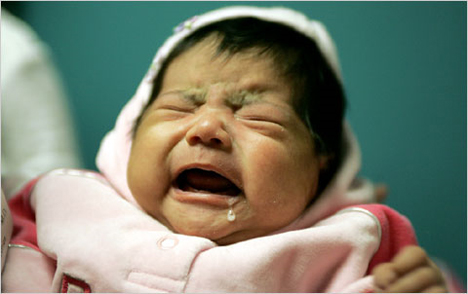
Every parent knows that babies usa different cries to communicate different things. But now researchers say that babies’ cries actually mimic the native language of their parents, a cue that they pick up while still in the womb. The study, published in the journal Current Biology, looks at the cries of 60 healthy babies of French and German couples. The research team, from the University of Wurzburg, found that French babies cried with a rising tone while German babies cried with a falling tone. These patterns follow those of the respective languages used in the babies’ homes. Listen to an example at BBC News.

What’s even more surprising about this study is that newborns exhibit these distinctive cry patterns as early as three days after birth. Previous studies had shown that babies could consciously match vowel sounds from adult speakers from about 12 weeks of age. This new study shows that not only are human babies capable of producing different cry patterns; they prefer to cry in a pattern that matches that of the language spoken around them every day. It’s an impressive find, and one that may prompt us to look differently at the way language is learned. But many newborn behaviors are reflexes or instincts that fade as the baby gets older and then have to be re-learned later in a different way. This means that we’ll need to take a closer look at these findings with older babies to see if the imitation is constant and continuous.

